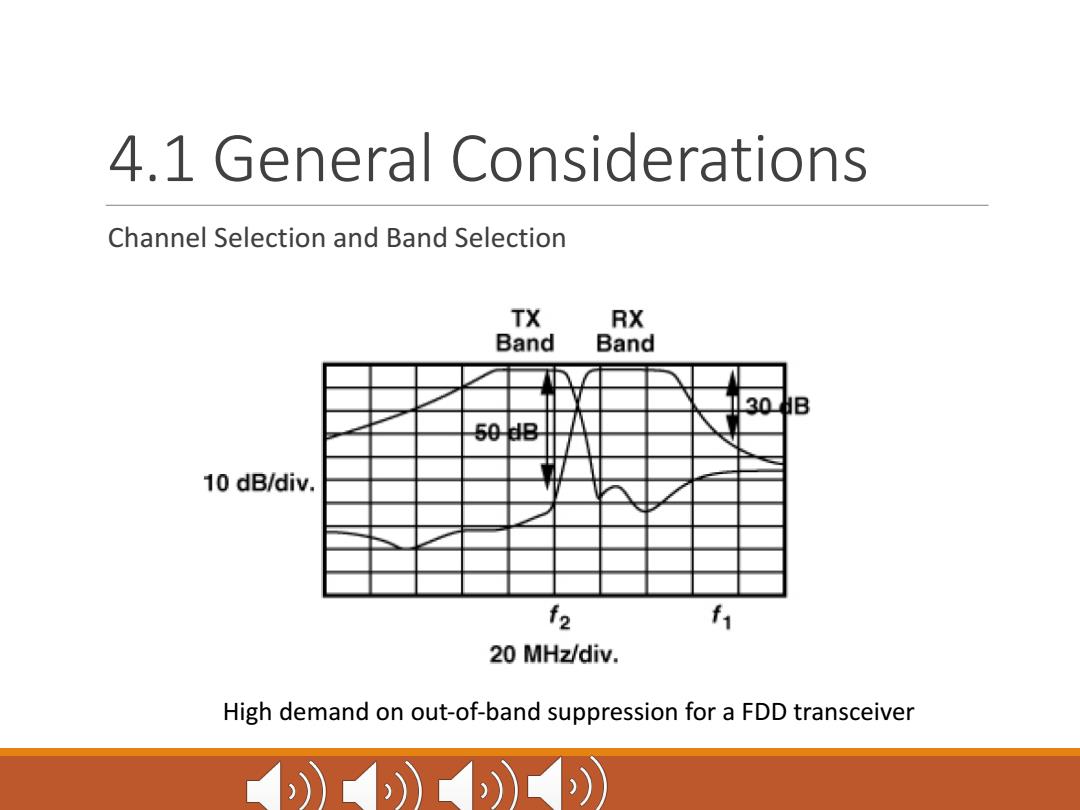
4.1 General Considerations Channel Selection and Band Selection TX RX Band Band 30中B 50B 10 dB/div. f2 f 20 MHz/div. High demand on out-of-band suppression for a FDD transceiver ))))
4.1 General Considerations Channel Selection and Band Selection High demand on out-of-band suppression for a FDD transceiver
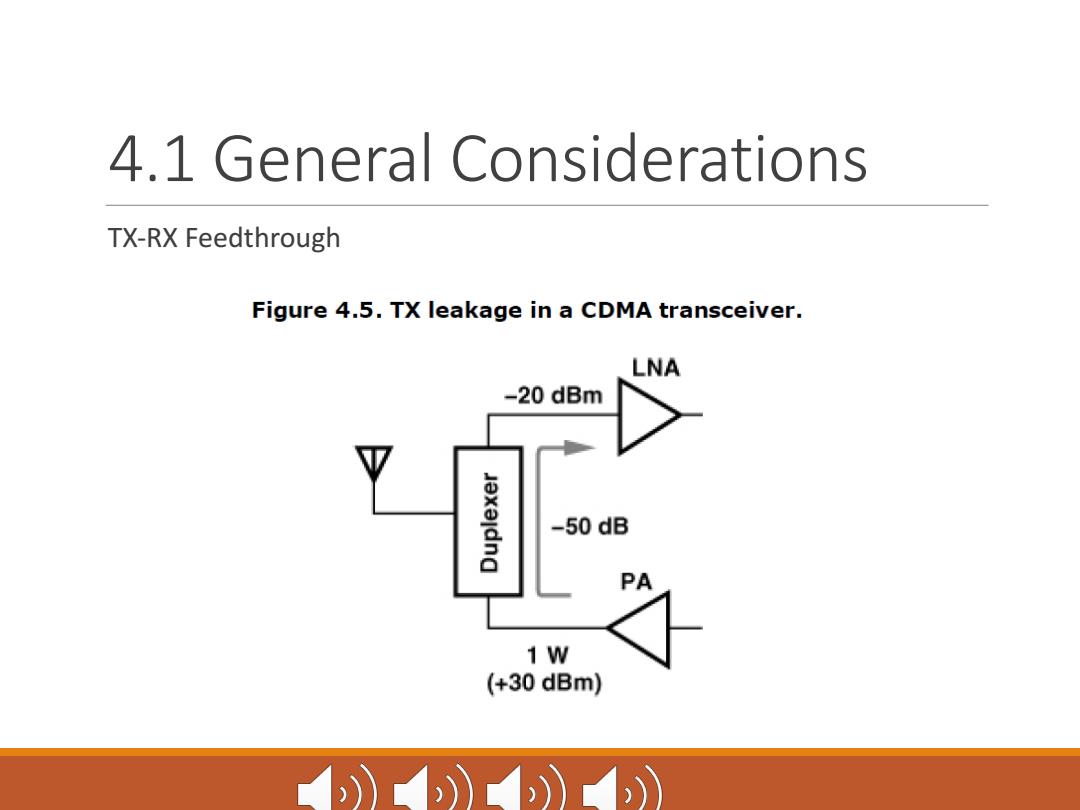
4.1 General Considerations TX-RX Feedthrough Figure 4.5.TX leakage in a CDMA transceiver. LNA -20 dBm -50dB PA 1W (+30dBm) ))
4.1 General Considerations TX-RX Feedthrough
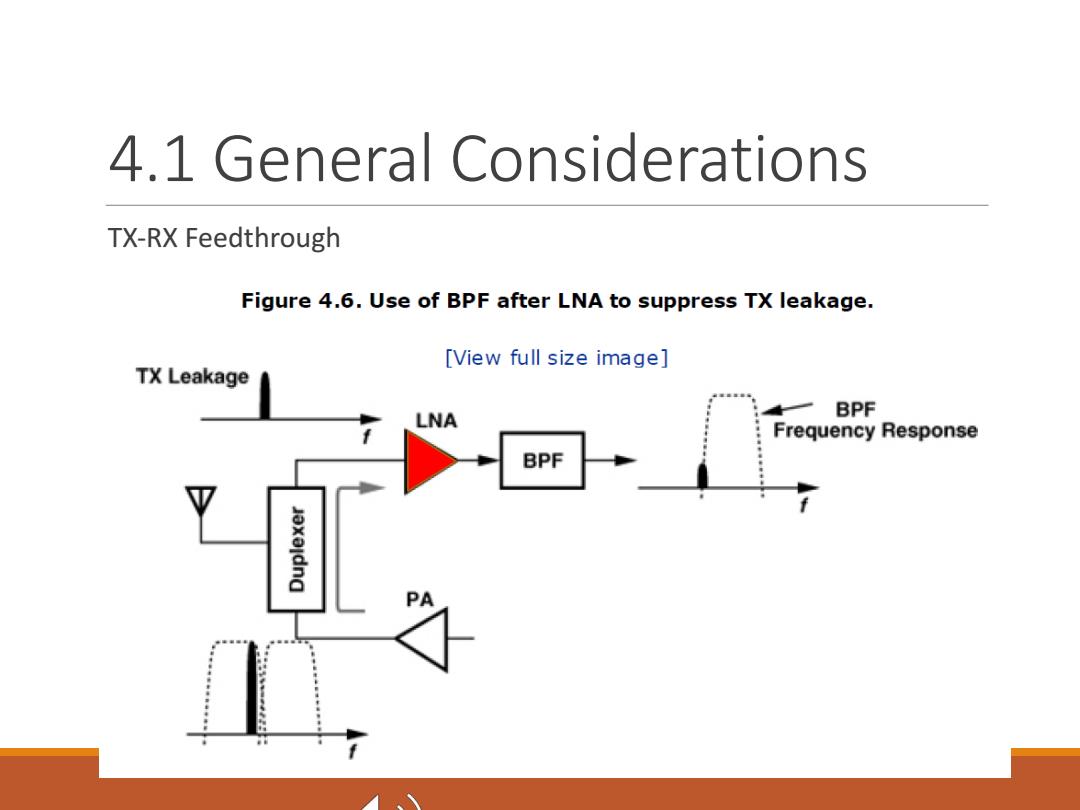
4.1 General Considerations TX-RX Feedthrough Figure 4.6.Use of BPF after LNA to suppress TX leakage. [View full size image] TX Leakage LNA BPF Frequency Response BPF Jaxajdna
4.1 General Considerations TX-RX Feedthrough
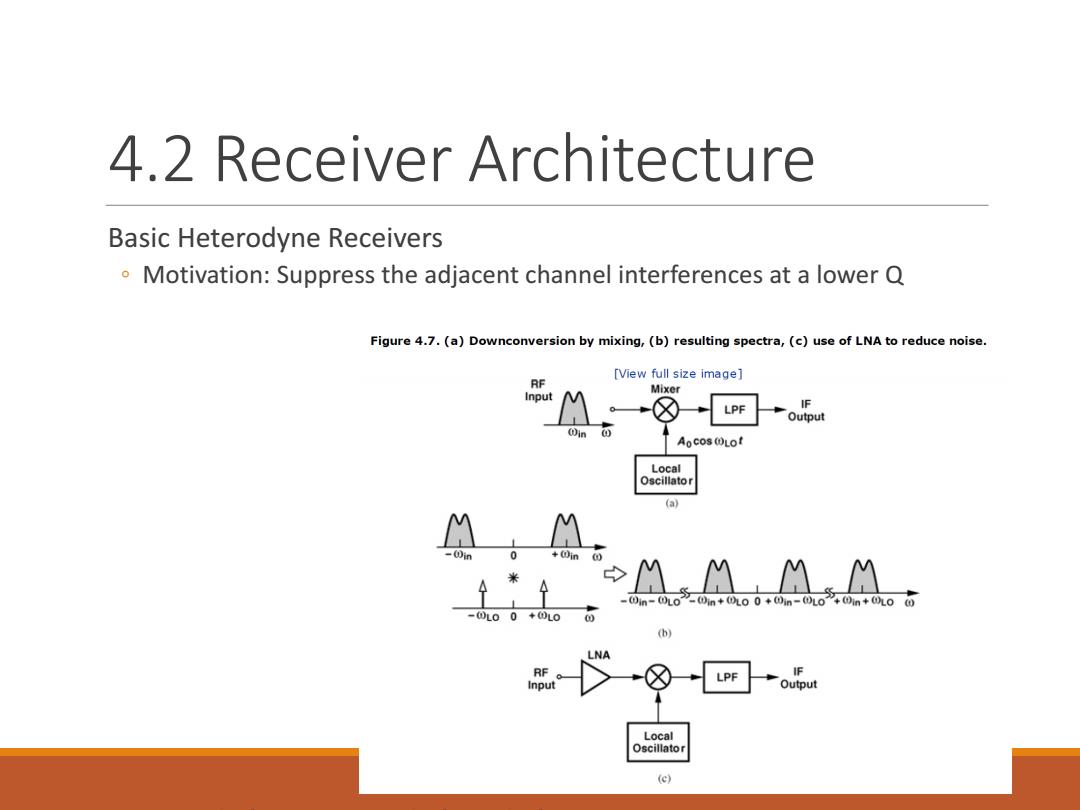
4.2 Receiver Architecture Basic Heterodyne Receivers Motivation:Suppress the adjacent channel interferences at a lower Q Figure 4.7.(a)Downconversion by mixing,(b)resulting spectra,(c)use of LNA to reduce noise. [View full size image] RF Mixer Input LPF IF Output Aocos OLof Local Oscillator -0n-0Lo-n+00+0n-0Lo+0n+00 -0L00+0L0 (b) LNA RF LPF F Input Output Local Oscillator (c)
4.2 Receiver Architecture Basic Heterodyne Receivers ◦ Motivation: Suppress the adjacent channel interferences at a lower Q
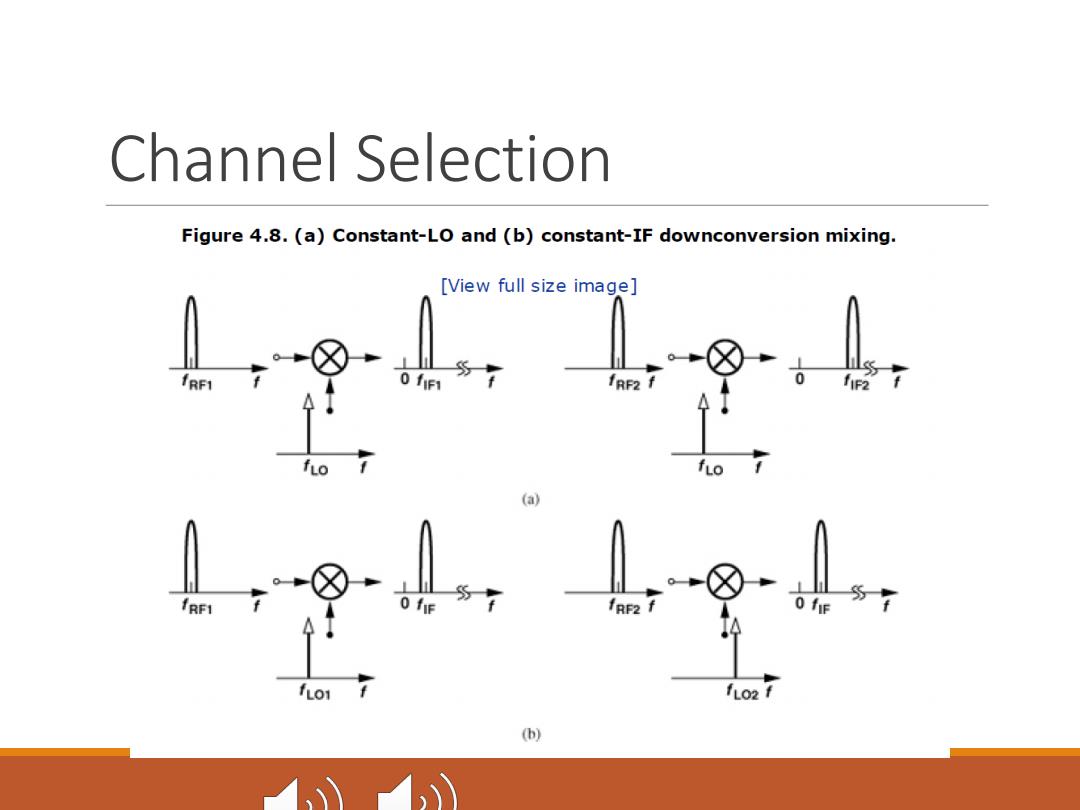
Channel Selection Figure 4.8.(a)Constant-LO and (b)constant-IF downconversion mixing. [View full size image] a 正 fRF2 fLoz f (b)
Channel Selection